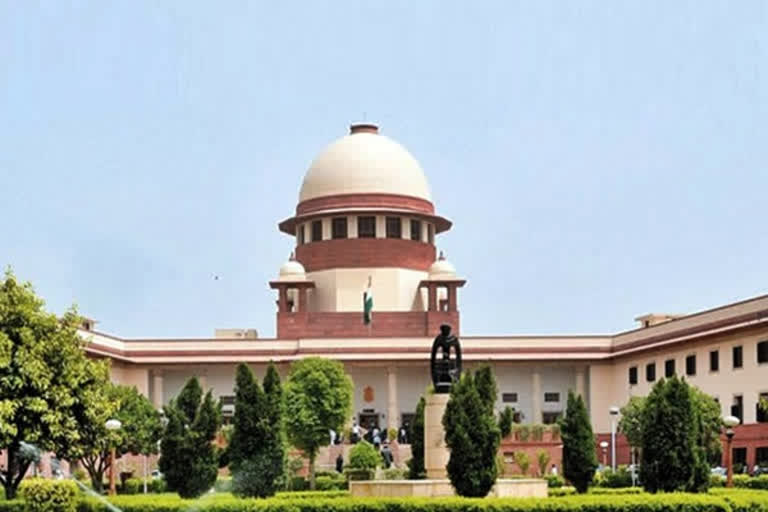New Delhi:The Supreme Court Wednesday observed that it would consider laying down a protocol to be followed for projects like road widening which require cutting of trees so that there is minimum damage to the environment.
The apex court also said it did not consider it tenable that if road is less than 100 km then Environment Impact Assessment (EIA) is not necessary.
The observations came while hearing a plea relating felling of over 350 trees for construction of railway over bridges (ROB) and widening of National Highway-112 from Barasat to Petrapole on the Indo-Bangladesh border in West Bengal.
A bench headed by Chief Justice S A Bobde said the protocol would make sure that alternatives adopted for the project are less damaging to the environment.
A four-member committee constituted by the top court informed it that before implementing a project of national importance environmental impact assessment is desired and this has not been done in the project under consideration.
The committee said that the State authorities are considering project under consideration as an independent project which is affecting a distance of 59.2 km only.
"According to a circular issued by MoEF, if a road project have length less than 100 km, in that case there is no need to get EIA from any government agency. Such argument, in present case, is an attempt to circumvent the law of the land.
Also read:No propaganda can deter India's unity: Amit Shah
"We feel deriving such conclusion is erroneous and needs rethinking on the part of the state of the West Bengal.. According to the committee members EIA should be taken up before starting the project related work," the panel said.
Advocate Prashant Bhushan, appearing for the petitioner, referred to the MoEF notification and said that in Char Dham project roads were divided in smaller segments in order to avoid EIA.
The court said," Prima facie, we don't consider it tenable that if road is less than 100 km then EIA is not necesaary. The whole environment is our land of everybody. There is no question of this government and that government."
The bench has now posted the matter for hearing on February 18.
The apex court had earlier formed a committee of environment experts to suggest an alternative to felling of over 350 trees for construction of railway over bridges (ROB) and widening of National Highway-112 from Barasat to Petrapole on the Indo-Bangladesh border in West Bengal.
The five-member committee is headed by Dr Soham Pandya of the Centre of Science For Village, Wardha.
Bhushan, appearing for petitioner Association for Protection of Democratic Rights (APDR) had earlier said that no alternatives were explored and permission was granted to fell the trees, which are heritage ones aged around 80-100 years.
He had said everyone knows about global warming and there is study which says if the vegetation is not protected then in next 10-20 years the human species will be in danger.
The Calcutta High Court on August 31, 2018, had paved the way for widening of the national highway and allowed felling of over 350 trees for widening of Jessore Road, which connects the city to Petrapole on the Indo-Bangladesh border, on the condition that five trees will be planted for each tree cut.
The NH-112 or Jessore Road is an important link between India and Bangladesh and the state government had undertaken a project to widen it. Hundreds of old trees line both sides of the road, some of which were decided to be felled for the purpose of widening of the road.
A PIL was moved before the high court challenging the state's plan to fell the trees. After arguments for several months, the high court allowed felling of 356 trees at five places from Barasat to Petrapole border along the Jessore Road.
PTI
